Manual de uso Salter 9174 WH3R Analyser Báscula
¿Necesita un manual para su Salter 9174 WH3R Analyser Báscula? A continuación puedes ver y descargar el manual en PDF gratis en español. Este producto actualmente tiene 4 preguntas frecuentes, 0 comentarios y tiene 0 votos. Si este no es el manual que desea, , contáctenos.
¿Su producto tiene algún defecto y el manual no ofrece ninguna solución? Vaya a Repair Café para solicitar un servicio de reparación gratuito.
Manual de uso
Loading…


Loading…
Puntuación
Dé su opinión de la Salter 9174 WH3R Analyser Báscula calificando el producto. ¿Quiere compartir su experiencia con este producto o hacer una pregunta? Deje un comentario en la parte inferior de la página.Más sobre este manual
Entendemos que es bueno tener un manual en papel para tus Salter 9174 WH3R Analyser Báscula. Siempre puedes descargar el manual desde nuestro sitio web e imprimirlo tú mismo. Si deseas tener un manual original te recomendamos contactar con Salter. Es posible que puedan proporcionar un manual original. ¿Estás buscando el manual de tu Salter 9174 WH3R Analyser Báscula en otro idioma? Elija su idioma preferido en nuestra página de inicio y busque el número de modelo para ver si lo tenemos disponible.
Especificaciones
| Marca | Salter |
| Modelo | 9174 WH3R Analyser |
| Categoría | Básculas |
| Tipo de archivo | |
| Tamaño del archivo | 3.5 MB |
Todos los manuales para Salter Básculas
Más manuales de Básculas
Preguntas frecuentes sobre Salter 9174 WH3R Analyser Báscula
Nuestro equipo de atención al cliente busca información útil sobre los productos y responde a las preguntas frecuentes. Si encuentra inexactitudes en las preguntas frecuentes, indíquenoslo usando nuestro formulario de contacto.
Mi báscula muestra un peso demasiado bajo cuando me pongo en ella. ¿Por qué? Verificado
Para obtener el mejor resultado, la báscula debe estar en una superficie dura y nivelada. Cuando la báscula se coloca sobre una alfombra, por ejemplo, esto puede influir en la medición.
Ha sido de gran ayuda (2490) Leer más¿Qué es el IMC? Verificado
IMC significa Índice de Masa Corporal y se puede calcular dividiendo su peso en kilogramos por su estatura en metros al cuadrado. Por ejemplo, alguien con un peso de 70 kilos y una estatura de 1,75 metros tiene un IMC de 22,86. Un IMC entre 18,5 y 25 se considera saludable.
Ha sido de gran ayuda (1778) Leer másLa pila de mi dispositivo está oxidada. ¿Puedo seguir usándolo con seguridad? Verificado
Sí, todavía puede usar el dispositivo con seguridad. En primer lugar, retire la pila oxidada. Nunca la toque con sus manos desnudas al hacerlo. A continuación, limpie el compartimento de la pila con un bastoncillo de algodón mojado en vinagre o zumo de limón. Déjelo secar e inserte nuevas pilas.
Ha sido de gran ayuda (755) Leer más¿Puedo usar una báscula con los pies mojados? Verificado
Depende de la escala. Al utilizar una balanza de diagnóstico es necesario que sus pies estén secos para poder realizar correctamente las mediciones.
Ha sido de gran ayuda (447) Leer más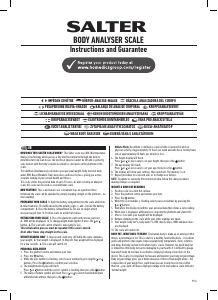

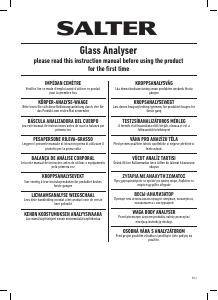

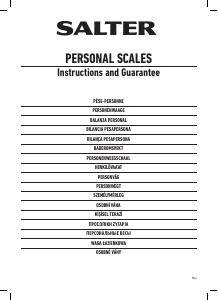
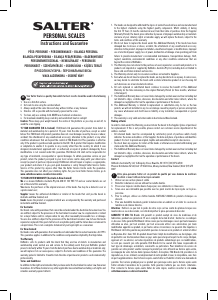
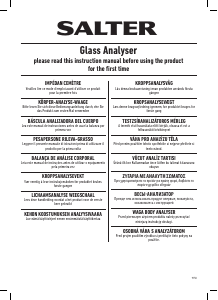
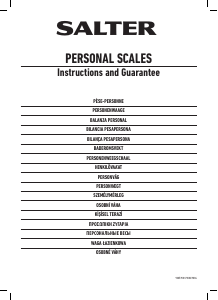
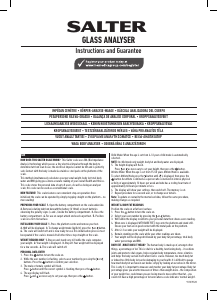
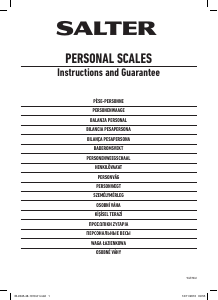
Únase a la conversación sobre este producto
Aquí puedes compartir lo que piensas sobre Salter 9174 WH3R Analyser Báscula. Si tiene alguna pregunta, primero lea atentamente el manual. Puede solicitar un manual utilizando nuestro formulario de contacto.